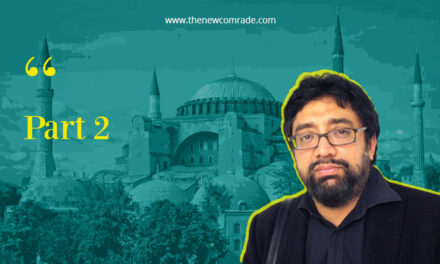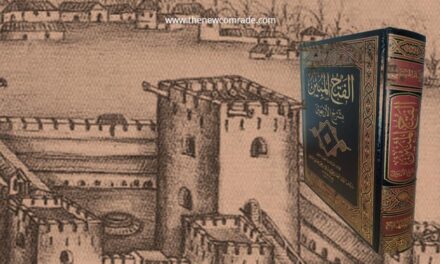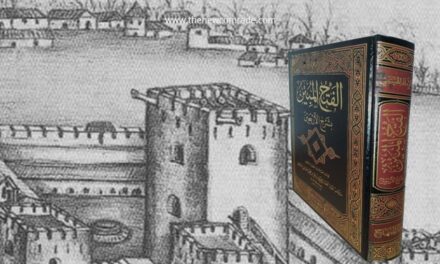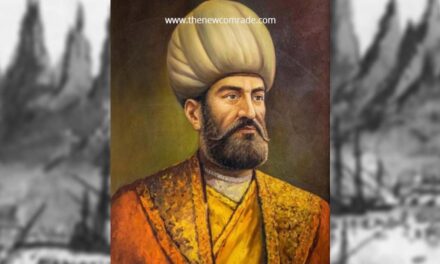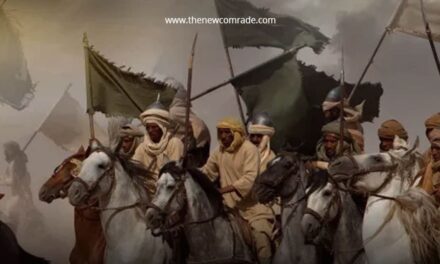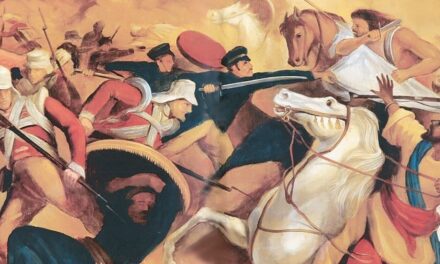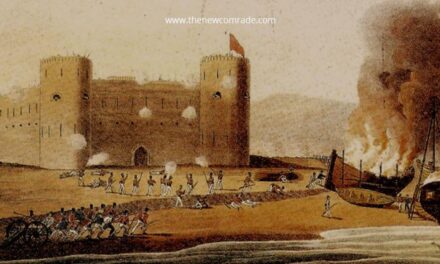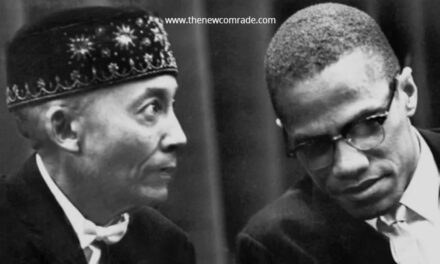
Qazi Muhammad’s Fath-ul Mubeen and the Fight Against Foreign Colonialism- 02
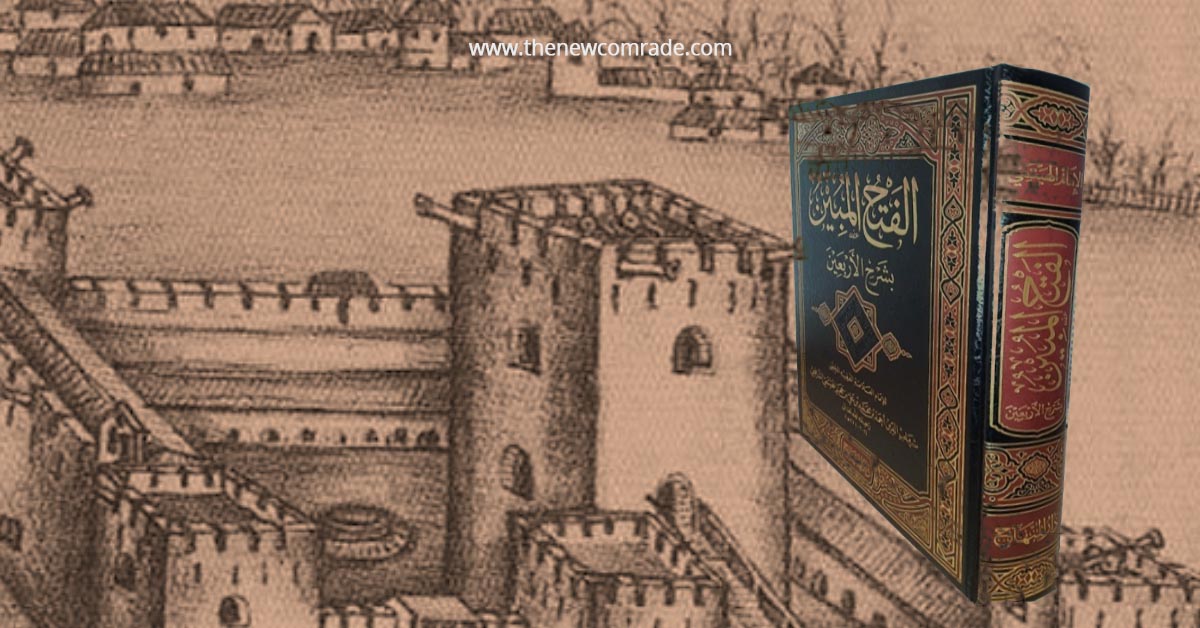
In the following verses the descriptions of the Portuguese building a fort at Kozhikode with the permission of Zamorin and the Zamorin’s recapturing of the fort are given. Once they lost the fort, the Portuguese headed for Cochin. The king of Cochin was not in good terms with the Zamorin and allowed the Portuguese to build a fort in Cochin. The poet then describes the atrocities committed by the Portuguese at Cochin.
“They burnt countries along with mosques and enslaved the inhabitants.
Then they built a Fort in Kodungallur and that was an impregnable strong hold”.11
One can also find descriptions of the fight between foreign countries and the Portuguese. Some of these countries subsequently entered into treaties with them. The Zamorin was also forced to come to terms with them because of his helpless conditions. He again gave permission to construct a fort at Chaliyam. From lines 150 to 167 the poet speaks about the fort built by the Portuguese.
“The Fort of Chaliyam was unique, as described by the witnesses and travellers. To our knowledge the Portuguese did no such another loftily fort in Malabar. It was impregnable and imposing and huge cannons were set up around it.
The locality of the fort is an island. It is surrounded by river Chaliyam sub serving the purpose of unapproachable protective walls.
It has four quadratic towers connected with partition walls. The western side is near to the sea and the right side ends to the river.
The lower part of it was a go-down for commodities and the upper part with many storeys with ladders.
In the middle of the Fort-wall there was a wooden door. Inset in every door-leaf there was a small door and above that door there were many decorative designs. Its gateway was like a hornet’s nest and the well was in the middle of the edifice. Around the fort there were houses which were separated with opened walls. The right side of fort bordered the river water and the other side reached the sea. When the Portuguese became inspired with such élan on being impressed with the cannons, the mighty
fort and man power. They began to engage in oppression and aggression and they tortured the Muslims, after capturing
them on man-hunting”.12
Soon after the construction of the fort, the Portuguese enmity and ferocity increased. They again resorted to
utter brutality and torture towards the natives.
“The Muslims were driven along the streets as tortured and fettered captives in an abjectly perplexed
condition.
The Portuguese forced them to carry faeces and, what is more, they were tied up in filth.
They killed the Muslims with the saw and sometimes with guns and fire
Sometimes chocking them with quick-lime and smoke, at times by using horses and slaves for beating
them up to death.
Muslims were forced to eat their own flesh and to shoot arrows at their own bodies.
Often they throttled them with rope and in many cases they killed them amputating limb after limb.
Likewise they drowned them in the sea tied in a bag and dropping it like an anchor.
Often they slaughtered him with a knife like an animal.
They tied one of their legs up the mast of the ship by making their making their heads downward.
This torture inflicted upon Muslims used to be done in the presence of Muslims, but they were
incapable of resisting it. Oh, what a miserable fate oh, Muslims!
After the unutterably cruel massacre the Muslims bought the dead bodies of (their brethren) from the
Portuguese for interring them in burial grounds of the believers.
They intercepted the ships bound for Mecca harassed the pilgrims and that was the greatest tragedy”.13
The helpless people, especially the Muslims had to suffer more of these atrocities. The Zamorin had been enfeebled both in military and economic back up due to the frequent wars fought against the Portuguese. Hence he asked his subjects to patiently suffer the cruelties meted out to them by the Portuguese.
“Zamorin was always engaged in peace-making journey and war with loss of army in the teeth of trials and tribulations.”
At times he was constrained to reach a compromise with them in the absence of supporters and adequate weapons. Then he sent, an unavailing complaint to Sultan Ashi of North Sumatra resulting in only fatigue and despair.
“The Zamorin-Portuguese relationship continued in this manner for forty years.
When his subjects complained to him against the Portuguese atrocities, he never used to pay heed to
them.
Whoever approached him with complaints were advised to be patient and to wait (for deliverance)
He replied with a plea that as long as the Portuguese had a base in India, they could not be expelled”.14
It was at this time, both the Bijapur Sultan, Ali Adil Shah and Nizam Shah of Hyderabad came together and turned against the Portuguese and wrote letters to the Zamorin asking him to conquer the Chaliyam Fort. Thus the Zamorin engaged his forces to conquer the fort at Chaliyam.
“God changed the mind of Zamorin (by the support put forth by the Sultan of Bijapur and the Nizam
of Hyderabad), so he selected the path of war against the Portuguese- the disbelievers. Then he sent two ministers with an army entrusting everything with them (the ministers). The first one was traditional by chief minister (Mangattachan) and the second, the minister of finance. It was to besiege the Fort of Chaliyam that they were sent with Muslim and Hindu soldiers with a firm
resolve”.15
He kept giving directions to the generals of the troops regarding the ways of attacks. However, there arose a dispute between the two generals and they could not make the expected result in the advance of the troops. The poet continues to say that their morale went low by the horror of war and the number of human deaths.
“And every time one dashed to the battle front, his assault was with the verve and vigour of a lion.
However on the laps of two days he can be seen walking about like a demoralized man.
Owing to the terror of war and the loss of men how can they be in any other predicament than this?
And their soul has reached their gullets”!16
At this time, the mother of Zamorin wrote to Muslims and called them for a meeting. The meeting was conducted at Mizkal Masjid in Kozhikode which was attended by eminent leaders like Shaykh MamuKoya, Umar Antabi, Abdul Azeez Makhdum, Qazi Abdul Azeez (poet’s father), Kunhi Marakkar and senior officials of the Zamorin administration. The Zamorin, who was at Kodungallur at that time, was called back through a letter.
Once the Muslim leaders and the Zamorin took over the control of the battle, people became happy and took part in the battle vigorously with great confidence.
“The people flowed to the battle field (in huge numbers) were almost like the crowded ants clustering around a broken bee-hive.
Everybody fought in fulfilment of his responsibility as furiously as the lion and the tigers.
They drug up trenches around the Fort well before dawn.
These trenches reached up to the proximity of the Forts so that the throw of a stone by a small boy
would hit the Fort”.17
They fortified the siege of the Chaliyam fort so meticulously that there was nothing left neglected.
“Soldiers constructed a tunnel leading to the Fort. They are ready with axes to demolish the Fort.
They have also brought long ladders, hooks and ropes.
How many machines! How many tricky gadgets! And how many ruses are used by our soldiers”!18
The troops of the Zamorin cut off all aids Portuguese used to get from other countries. The attempt to save the life of the wife of the captain Anthoniyo culminated in her murder.
“And that Antonio came in a warship to save his wife very cleverly like a crow.
He went on compelling them to enter the Fort. It was he who forced them to go to Chaliyam”.19
Thereafter the poem proceeds with heart-touching description of the battle.
“Each hour brought its surprise. The horror of that day resembled the Doomsday.
The smoke and dust turned the day into night.
The shots echoed like thunder and the flashing swords resembled lighting.
Spears and arrows were showered on the enemy like meteors from the sky.
The bullets and arrows were falling on the enemy like thunder shower.
Then either side men advanced like rushing torrents and many were killed as flies”.20
The poet reveals the determination of the Zamorin and the fraternity prevailed among the Muslim and Nayar
soldiers.
“The Muslim soldiers swore on the Quran that they would be the first to die fighting the enemy. And the Nayar soldiers said: You are a small group. We shan’t leave you to wage this war on your own.
We can fight, all together and advanced to the Fort”.21
Long siege enfeebled the Portuguese and the poem deals with their miserable conditions.
“As a result of the large number of refugees and the stoppage of the food supplies they now had only just enough to keep them alive.
Added to this were the pitch darkness and the buffeting winds- life in the Fort was miserable.
At this time they let out the slaves and the destitute from the Fort. These came out in groups as on some
festive occasion.
However the Portuguese themselves, however much they wanted food, didn’t come out.
They began to eat rats, crows, cats, dogs, donkeys and such others. Some of them even killed their
friends for foods”.22
Thus the Portuguese were made to surrender. They spoke of treaty. The poet goes on to say that all
those were ready to surrender were permitted by the Zamorin to survive safely.
“For a variety of reasons he was convinced that it was proper to offer refuge to his enemies, he
proclaimed to his minister and chieftains
“Whoever came out of the Fort today is safe, but none who lags behind would be safe hereinafter”
“The dwellers of the Fort packed their belongings in boxes, left nothing, even their sandals.
They surmised that such articles could legitimately be carried away under the provisions of the treaty.
They voyaged in the boats owned by the Muslims, and some Muslims even stood guards watching their
evacuation. Among them were the noble, the wretched, prominent clergy men and their admiral.
None questioned them on the chattels they carried in their hands”.23
From lines 476 to 489 the poet makes it clear that the magnanimity of the Zamorin did not allow the
prisoners of war to be ill-treated or killed as wanted by some of the natives. “Zamorin entrusted the prisoners to the care of the ministers for sending them to wherever they pleased to.
They include the aged, the young, the elite, the slave, the woman, and then new born babe.
When they were leaving the border of Zamorin’s country they said: “We are now coming from our
graves.”
All of them continued to extol Zamorin, his ministers and troops.
On conquering the Fort the troops dispersed and the people engaged themselves in the demolition of
the Fort”.24
Thereafter the poem talks about the treaty signed between Bijapur sultan Ali Adil Shah and the Portuguese in an unfavourable way. The event took place, after eight years of the conquest of the Chaliyam fort, in 1579.
“When the demolition is being completed, sailors came with the news:-
“The king Adil Shah, who was fighting invoking the blessing of Allah, all on a sudden without any
reason or constrained struck a truce with the enemies’.
This act was in repugnance to the oath that he had taken before Allah. The assurance and words given
by him in writing came to be conveniently ignored.
Even the tower of clock in the Portuguese Fort was sent to Adil Shah (in token of Zamorin’s faith in
Adil Shah).
This tower clock was purported to everyone hearing the bell reminded of the capture of the Fort and
the sight of the bell was purported to incite everybody against the Portuguese”.25
Again the poet praises the nobility of the Zamorin and talks about the necessity of other rulers making him a role model.
“Did ever hear a similar war having taken place earlier amidst the Arabs or the others.
Oh, kings, sultans, military generals and leaders!
Oh, the Muslim kings, you take the lesson from this Hindu king.
How many Muslims kings have ever heard of the betrayal committed by
such accursed persons subjecting people to untold miseries.
A good many kings they have assassinated, and some have been reduced to slavery confiscating there
countries and lands and burning up their ships, the real estates and chattels. But it is never known whether any Muslim king as ever turned kindly towards these oppressed Muslims.
Have they ever unsheathed their swords in defence of the poor and weak Muslims against the mean
and arrogant group?
Zamorin doesn’t believe in our religion. Yet he fought against the Portuguese and he spent whatever
was in his treasury for that purpose.
Zamorin conquered the Chaliyam Fort. None other than Zamorin did anything to quell this faithless
Portuguese”.26
Towards the end of the poem, the poet requests the readers to pray for the Zamorin. This great poem concludes with a request to forgive the errors in the poem and by asking the readers to pray for the Prophet and his family.
The analysis-both literary and factual- of this great work reveals that the hero of the book is the Zamorin and the anti-hero, the then Portuguese captain Anthoniyo.27 Instead of eulogizing the Zamorin, as was the practice of the court-poets of those days, the poet has presented the Zamorin as a ruler who engaged himself in the heroic act of saving his country and deliverance of people from the clutches of foreign oppression. The language of Fath-ul Mubeen is unmatched and rich. Its style is remarkable and fine. Those days, there was no one else in India who had shown such talent in Arabic language. Magnificent style, pure and clear words,
usages that hit at the targets, scorn coated by humour, enchanting metaphors are the ingredients that make the poem so enjoyable.28
Fath-ul Mubeen was first translated into English by M.A. Mueed Khan of Hyderabad. There had been two Malayalam translations of this work published. The first was done by K.K Muhammad Abdul Kareem and the second by Prof. Mankada Abdul Azeez. This literary contribution sheds light on the versatile personality of its author. Prominent aspects like Qazi Muhammad’s views on politics and political freedom, his uprightness in upholding noble values in his interactions with Muslim community, and above all, vehement antipathy to the colonial powers, are all reflected in this great work. It is also to be noted that the poem reveals a golden period of communal harmony in Kerala. Beyond any doubt, Fath-ul Mubeen is all praise for the honour and respect shown to each other among the Nayar and Muslim soldiers and the unity they upheld in fighting the colonial powers. This great piece of literature has succeeded in promoting and spreading the spirit of nationalism so as to initiate resistance against any foreign attacks. It is also an attempt to spread historical awareness in the society.29 The work provided ideological backing for the struggles against the colonial powers and has played a vital role in uniting the native communities to turn against the imperial forces. No doubt, the book inspired the natives to offer revolutionary resistance against the injustice and atrocities perpetrated by colonial forces.
8Fath-ul Mubeen, verses 59-67
9Fath-ul Mubeen, verses 73-74
10Fath-ul Mubeen, verses 75-78
11Fath-ul Mubeen, verses 123-124
12Fath-ul Mubeen, verses 154-167
13Fath-ul Mubeen, verses 184-191
14Fath-ul Mubeen, verses 201-207
15Fath-ul Mubeen, verses 218-221
16Fath-ul Mubeen, verses 241-243
17Fath-ul Mubeen, verses 278-281
18Fath-ul Mubeen, verses 288-290
19Fath-ul Mubeen, verses 324-325
20Fath-ul Mubeen, verses 345-350
21Fath-ul Mubeen, verses 401-403
22Fath-ul Mubeen, verses 420-425
23Fath-ul Mubeen, verses 445-451
24Fath-ul Mubeen, verses 485-489.
25Fath-ul Mubeen, verses 504-509.
26Fath-ul Mubeen, verses 510-519
Author Profile



